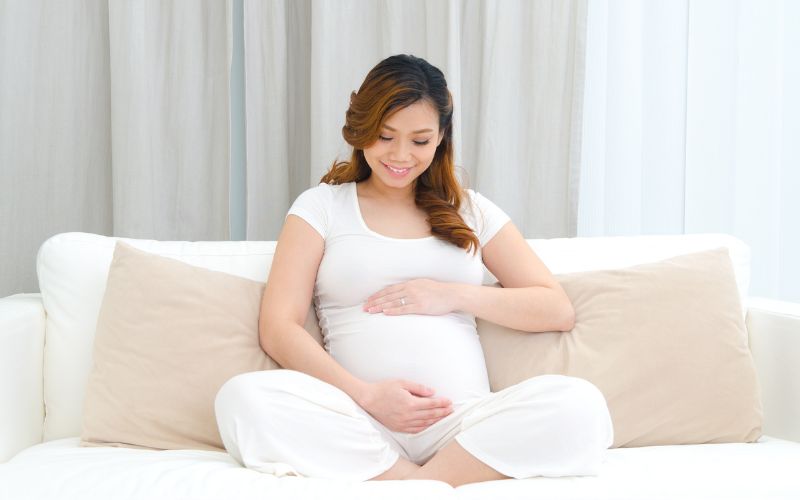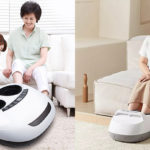Is it harmful for pregnant women to squat or sit on the floor? Many people believe that pregnant women should avoid these postures as they may be harmful to the fetus. However, is this belief entirely accurate? What are the safe sitting postures for expectant mothers? Let’s explore these questions in detail in the following article!
1 Can Pregnant Women Squat?
According to Master of Science, Dr. Huynh Kim Dung from Phuong Chau International General Hospital (Can Tho), squatting during pregnancy is not completely forbidden. This posture is not extremely harmful to the fetus. It is only discouraged to squat continuously for extended periods and repeatedly.
As the pregnancy progresses and the baby bump grows, the lower abdomen and spine of the mother will gradually experience increased pressure. If a pregnant woman squats for a long time, it can cause the muscles to stretch continuously, leading to sharp pain and possibly worsening edema. Additionally, this posture increases the risk of falling, which can be dangerous for both the mother and the fetus. Moreover, squatting can also inadvertently put pressure on the bladder, causing pain and discomfort.
Therefore, it is best for pregnant women to avoid squatting for extended periods to protect their health.
 Can Pregnant Women Squat?
Can Pregnant Women Squat?
2 Can Pregnant Women Sit on the Floor?
Many elders advise against pregnant women sitting on the floor, especially with their legs crossed, believing it to be harmful to the fetus.
In reality, as the baby bump grows, sitting on the floor can compress the lower limbs, affecting blood circulation in the legs and potentially causing edema, numbness, and pain. Additionally, pregnant women may experience abdominal and back pain and face difficulties getting up after sitting on the floor for extended periods.
 Can Pregnant Women Sit on the Floor?
Can Pregnant Women Sit on the Floor?
3 Other Sitting Postures to Avoid During Pregnancy
In addition to the above postures, pregnant women should also avoid the following:
-
Crossing legs while sitting as it can compress the thigh nerves, leading to swelling, joint pain, and even spinal damage.
-
Half-lying, half-sitting posture as it can put significant pressure on the spine and cause sharp pain upon standing up, despite feeling comfortable initially.
-
Leaning back while sitting as it may worsen back pain.
-
Sitting with a bent abdomen as it is uncomfortable and can harm the fetus. This posture exerts pressure on the fetus and may be detrimental to the baby’s health.
 Other Sitting Postures to Avoid During Pregnancy
Other Sitting Postures to Avoid During Pregnancy
4 Tips for Safe Sitting Postures During Pregnancy
-
Pregnant women should maintain a straight-backed sitting posture, with their shoulders and hips also touching the backrest of the chair for maximum safety.
-
Adjust the height of the chair when sitting to ensure it is not too high or too low.
-
Use a small lumbar support pillow to reduce back pain when sitting.
-
Avoid sitting in one place for too long without taking breaks.
-
When sitting down, pregnant women should lower their hips onto the outer edge of the chair and then scoot back into the chair.
-
Stand up slowly to avoid sudden movements.
 Tips for Safe Sitting Postures During Pregnancy
Tips for Safe Sitting Postures During Pregnancy
This article has provided insights into why pregnant women should avoid squatting and sitting on the floor, along with recommendations for safe sitting postures. We hope this information helps expectant mothers take better care of their health and well-being during pregnancy!
Source: Vietnamese Women’s Newspaper
Exploring the Pros and Cons of Investing in a Foot Massager
Looking to improve your health and wellbeing? A foot massager may be the perfect option for you. You’ll find out in this article who should be using a foot massager, as well as the health benefits it may offer and the precautions to take when purchasing and using one. Read on to learn more about the potential benefits of a foot massager.




































